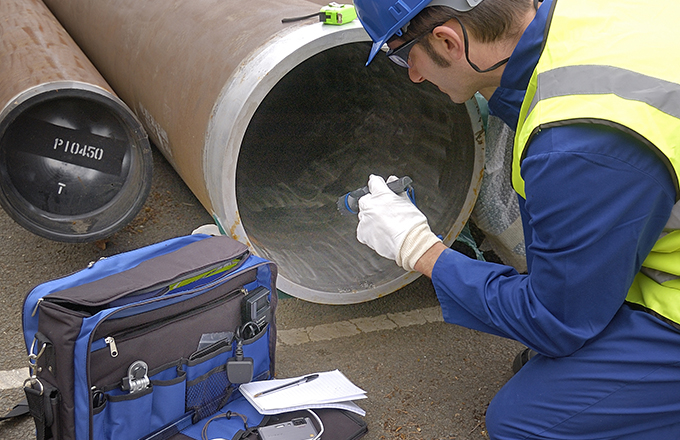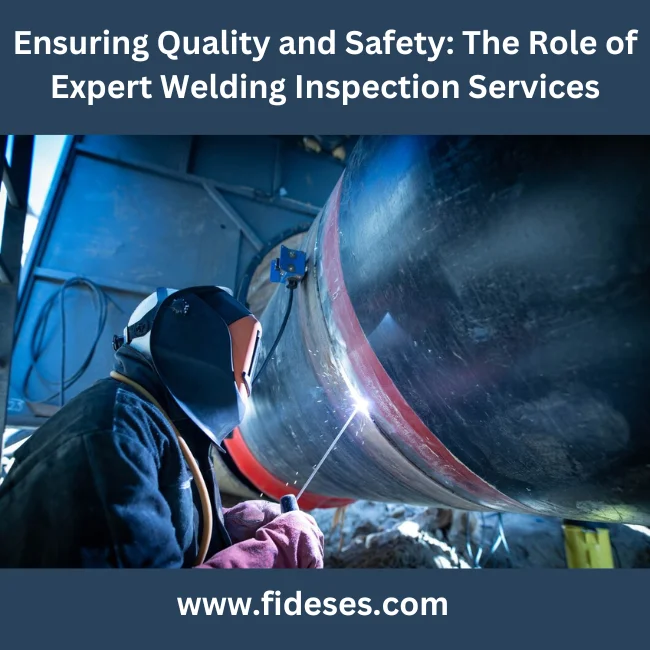The Value of Thorough Welding Examination in Industrial Applications
In the world of industrial applications, the value of precise welding inspection can not be overstated. It plays a crucial role in making sure the architectural integrity and durability of welded parts. Advanced non-destructive screening strategies allow for the early detection of prospective problems, such as fractures and insufficient blend, which, if left uncontrolled, could cause tragic failings. Additionally, adherence to rigorous sector requirements not just ensures high quality yet additionally builds customer self-confidence. As we check out the multifaceted advantages of persistent welding examinations, one need to think about the broader ramifications on safety and security, reliability, and cost-effectiveness in commercial procedures.
Enhancing Architectural Stability
When it concerns welding inspection in industrial applications, boosting architectural honesty is paramount. The key objective of welding assessment is to ensure that the welds are qualified of birthing the expected anxieties and loads they will certainly run into in service. This entails a complete analysis of the welds' dimensions, placement, and total quality, guaranteeing they fulfill the defined criteria and codes. Exact assessment methods, such as visual assessment, ultrasonic screening, and radiographic testing, are critical in recognizing issues that might endanger the structure's safety and security and performance - Welding Inspection Madison.
The importance of maintaining architectural honesty in bonded structures can not be overstated. Improperly carried out welds can result in catastrophic failings, resulting in costly repair services, downtime, and also endangerment of human lives. Examiners play an important duty in the lifecycle of commercial components, offering guarantee that the welding process delivers the wanted toughness and durability.
Additionally, advanced technologies, such as phased selection ultrasonic screening and digital radiography, deal enhanced abilities in spotting prospective weak points, enabling rehabilitative actions before issues intensify. By prioritizing the honesty of welds through meticulous examination, industries can make certain operational performance and prolong the longevity of their framework.
Determining Welding Defects
Determining welding problems is an essential element of making sure the safety and dependability of bonded structures. These issues can compromise the honesty of the entire setting up and, if left unaddressed, might bring about disastrous failings. Typical welding defects consist of porosity, splits, insufficient blend, and damaging. Each of these flaws emerges from particular causes, such as inappropriate welding strategies, contamination, or inadequate warm control.

Skilled assessors make use of both visual examination and advanced non-destructive screening (NDT) techniques, such as radiographic or ultrasonic testing, to spot these flaws. The timely identification and correction of welding problems are necessary to preserve the architectural stability and longevity of commercial elements.
Ensuring Conformity Requirements
Maintaining the honesty of welded structures prolongs past recognizing issues; it needs adherence to strict compliance requirements. Compliance with well-known requirements, such as those supplied by the American Welding Society (AWS) and the International Company for Standardization (ISO), ensures that welds satisfy minimal safety and security and high quality demands. These requirements incorporate a large range of standards, consisting of product specifications, welding procedures, and qualification of welders. Adherence to these standards is important to stop architectural failures, which can cause tragic repercussions in commercial applications.
Regular audits and inspections are necessary in validating compliance. Inspectors have to possess a comprehensive understanding of the pertinent criteria and be skilled at using different non-destructive screening (NDT) techniques to evaluate weld high quality. By making sure that welding techniques straighten with compliance requirements, firms mitigate the threat of non-conformity, which can bring about lawful obligations and safety and security dangers.
Furthermore, maintaining conformity not only safeguards architectural stability but also boosts a company's online reputation in the market. Stakeholders and customers are more probable to depend on companies that regularly show a dedication to quality and security with extensive conformity. Thus, guaranteeing compliance requirements is a crucial element in the effective execution of welding in industrial applications.
Lowering Upkeep Costs

The application of sophisticated non-destructive testing (NDT) techniques, consisting of ultrasonic, radiographic, and magnetic bit examinations, enhances the about his capacity to find subsurface imperfections without endangering the architectural integrity of parts. By using these strategies, industries can substantially extend the life span of their devices, decreasing downtime and the linked financial burden of maintenance tasks.
Additionally, a robust welding inspection regime supports the optimization of maintenance timetables, shifting from responsive to anticipating maintenance strategies. This proactive technique not only cuts unforeseen failures yet additionally enhances resource allocation, making certain that upkeep initiatives are concentrated and reliable. Inevitably, the investment in extensive welding examination is offset by the significant cost savings recognized through lowered maintenance demands, contributing positively to the Get More Information general functional effectiveness of industrial ventures.
Improving Precaution
Although safety and security is a vital worry in industrial procedures, accomplishing ideal safety and security standards requires a devoted concentrate on the top quality and reliability of welded frameworks. Welding assessment plays a crucial duty in this context, as it ensures that all joints and connections satisfy strict safety and security standards. Comprehensive assessments assist recognize problems such as splits, porosity, or insufficient blend that could jeopardize architectural honesty. Such defects, if left unaddressed, pose substantial dangers, possibly bring about catastrophic failures.
To enhance safety actions, taking on advanced non-destructive screening (NDT) techniques is vital. Approaches like ultrasonic testing, radiographic testing, and magnetic particle evaluation enable thorough evaluation without damaging the framework. These innovations allow examiners to discover hidden defects early in the construction procedure, helping with timely restorative actions. Moreover, carrying out a durable quality assurance system that includes regular training for examiners and welders makes sure adherence to developed security requirements.
Last but not least, cultivating a society of safety within the organization emphasizes the value of comprehensive welding examinations. Motivating open communication and collaboration among assessors, welders, and engineers adds to a shared commitment to security excellence. Welding Inspection Madison. In doing so, markets can safeguard their operations, secure personnel, and maintain public count on

Final Thought
Thorough welding evaluation is crucial in industrial applications, substantially boosting structural integrity and integrity. Eventually, the persistent execution of welding examinations plays a crucial role in maintaining functional efficiency and safety and security in commercial settings.
As we check out the multifaceted benefits of persistent welding evaluations, one need to consider the broader effects on security, reliability, and cost-effectiveness in industrial procedures.
The primary objective of welding evaluation is to make sure that the welds are capable of bearing the anticipated tensions and loads they will certainly experience in service. Efficient official statement welding inspection plays an integral function in minimizing these prices by ensuring the stability and longevity of welds, consequently mitigating the danger of early failings.Comprehensive welding inspection is crucial in commercial applications, dramatically improving structural honesty and dependability. Inevitably, the thorough execution of welding inspections plays a critical function in preserving operational performance and security in industrial settings.